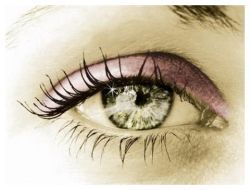
According to experts, regular intake of the vitamin may prevent failing eyesight caused by age-related macular degeneration (AMD) in women younger than 75 years.
AMD a chronic and progressive eye disease
AMD is a chronic and progressive eye disease that attacks the area of the eye called the macula, which causes permanent visual damage resulting in a blind spot in the center of vision.
It starts with blurring of images and progresses into inability to recognize faces, read or watch television. AMD cannot be cured by prescription glasses, medication, or surgery.
The study found that women with highest intakes of vitamin D had a 59 percent lower risk of AMD compared to those whose intake was the least.Link between vitamin D and risk of AMD assessed
In order to determine whether higher levels of vitamin D in the blood reduces the risk of developing AMD, U.S. researchers conducted a large scale study.
They analyzed the data of 1,313 women aged 50 to 79 years who were a part of the 'Carotenoids in Age-Related Eye Disease Study.'
As a part of the study, the participants underwent a blood test, called serum 25 (OH) D which reflects vitamin D intake.
Additionally, they were all questioned about their dietary habits and the time they spent outdoors.
Findings of the study
An examination revealed that overall, 241 women developed early age-related macular degeneration and 26 developed advanced disease.
The study found that women with the highest intakes of vitamin D had a 59 percent lower risk for AMD compared to those whose intake was the least.
The investigators also found that women who had a blood vitamin D level higher than 38 nmol/L cut their risk of the early age-related macular degeneration (AMD) by 48 percent.
According to the Institute of Medicine, a blood level of 50 nmol/L is considered adequate.
Though the study found vitamin D from foods and supplements cut the risk of the eye disease significantly, no such link was observed in women who absorbed vitamin D via sunlight.
Lead author of the study, Dr Amy E. Millen of the School of Public Health and Health Professions, University at Buffalo, New York stated,
"In women younger than 75, those who had 25-hydroxyvitamin D concentrations lower than 38 nanomoles per liter were more likely to have age-related macular degeneration than women with concentrations greater than 38 nanomoles per liter.The study is published in the April issue of the Archives of Ophthalmology.
"Blood concentrations above 38 nanomoles per liter were associated with at least a 44 percent decreased odds of having AMD."
A little about vitamin D
Vitamin D is a fat-soluble vitamin that is naturally present in very few foods but is available as a dietary supplement.
It may be obtained in the recommended amount from a well-balanced diet, including some enriched or fortified foods. It can also be found in fish liver oil, eggs and fatty fish and supplements.
Vitamin D is important in maintaining bone health, in absorbing calcium and phosphorus, and in helping the immune system.
The body manufactures vitamin D when exposed to sunshine, but people are spending more time indoors and are deficient of the nutrient.
The problem faced by older people is that as the body ages, capacity of the skin to absorb Vitamin D from sunlight decreases. Hence they need to replenish it from other sources.
Experts recommend 10 to 15 minutes of sunshine 3 times a week.
Comment: Read the following articles for more information about the health benefits of Vitamin D:
The virtues of Vitamin D: It's time we saw the light
Vitamin D Reduces Diabetes Risk by 43 Percent - Is There Anything This Vitamin Can't Do?
The sunshine superstar: study reveals Vitamin D as 'wonder vitamin'
Another study shows benefits of sunshine vitamin
"Sunshine Vitamin" Earning New Respect
Study: Vitamin D linked to heart health
Chronic Pain: Does Vitamin D Help?
High Levels of Vitamin D in Older People Can Reduce Heart Disease and Diabetes
Report Claims: Vitamin D Better than Vaccines at Preventing Flu



Reader Comments
to our Newsletter